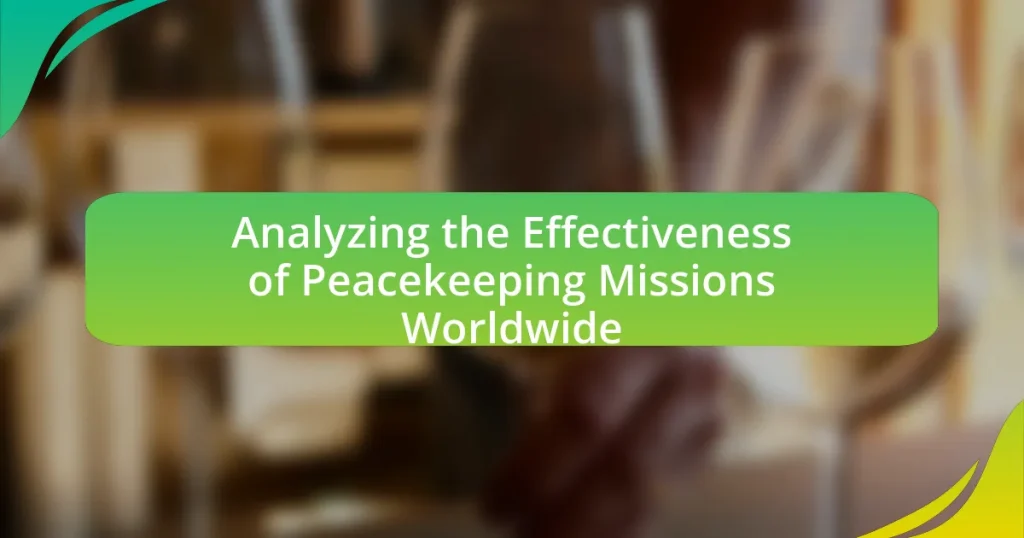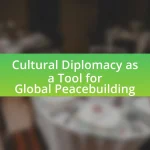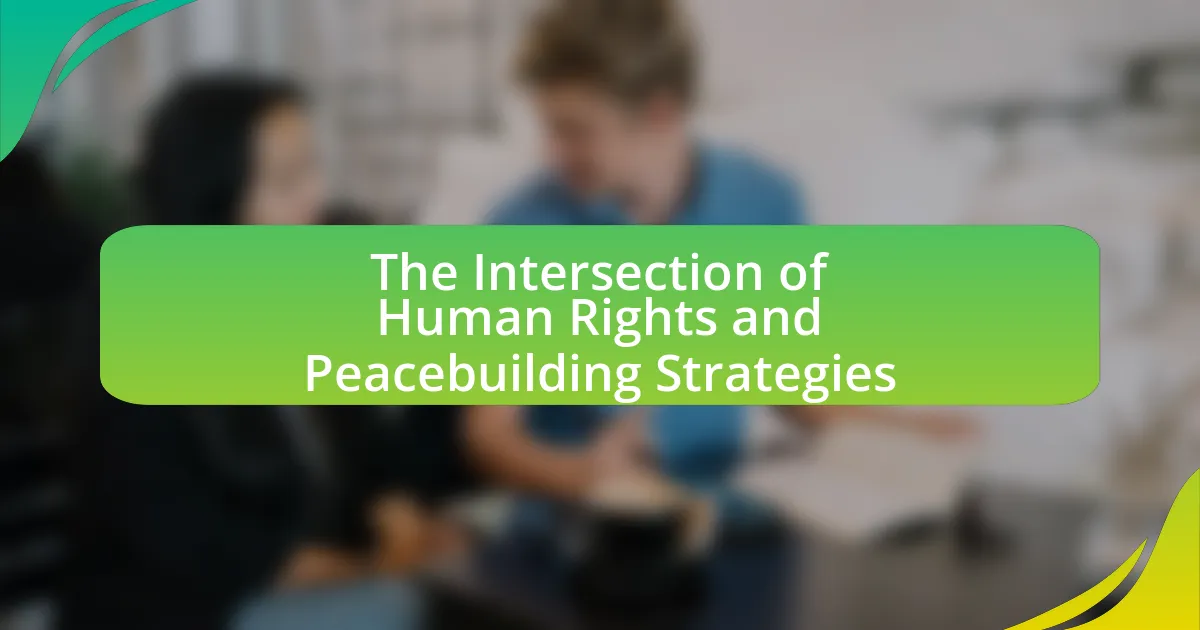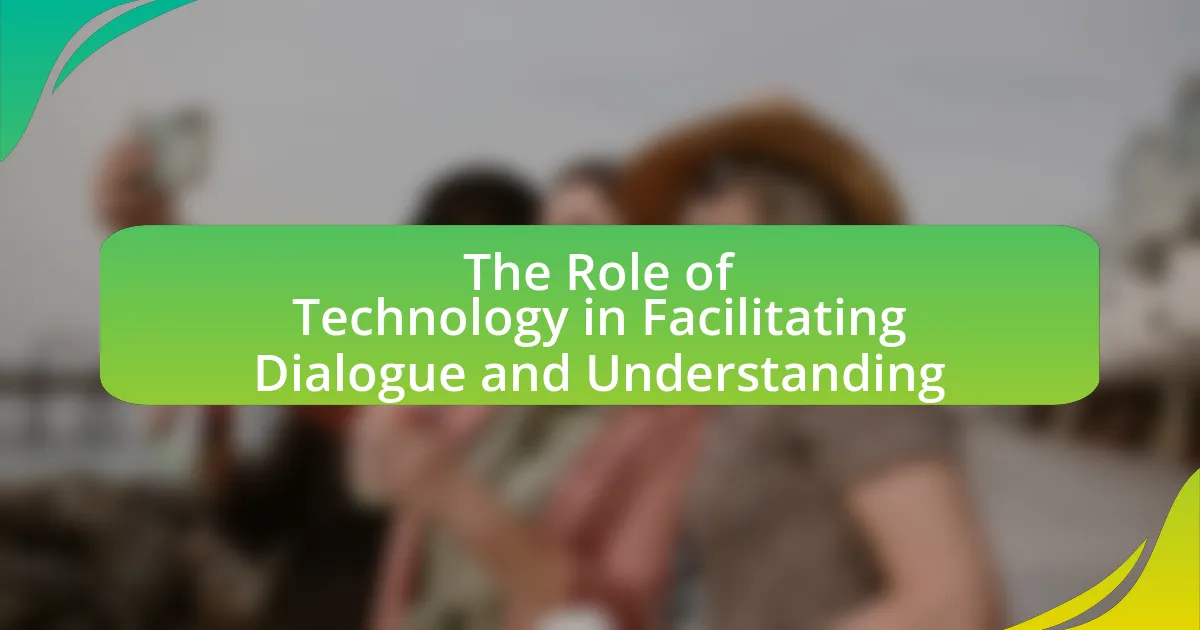Peacekeeping missions, primarily conducted by the United Nations, aim to maintain or restore peace in conflict-affected areas through objectives such as protecting civilians, facilitating humanitarian assistance, and supporting political stability. This article analyzes the effectiveness of these missions by examining their operational frameworks, key roles of peacekeepers, and the challenges they face, including resource limitations and complex political dynamics. It also explores how the duration of missions, community engagement, and external influences impact their success, while highlighting global trends and lessons learned from past missions. The discussion emphasizes the importance of clear mandates, adequate resources, and local cooperation in enhancing the effectiveness of peacekeeping efforts worldwide.
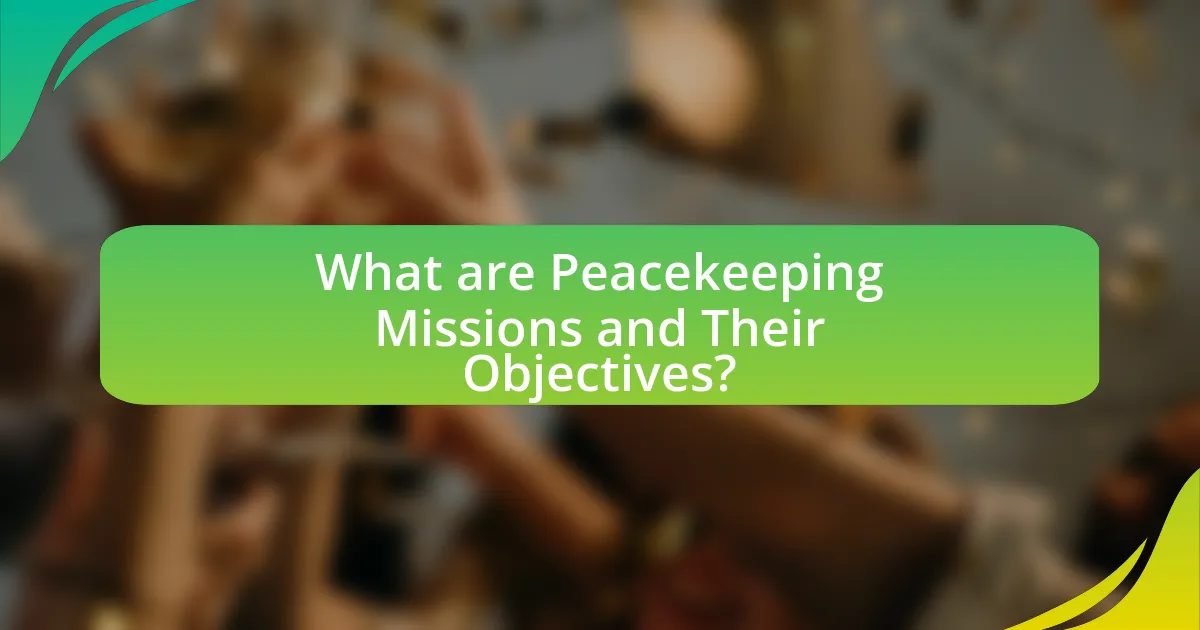
What are Peacekeeping Missions and Their Objectives?
Peacekeeping missions are operations conducted by international organizations, primarily the United Nations, aimed at maintaining or restoring peace in conflict-affected areas. Their objectives include protecting civilians, facilitating humanitarian assistance, supporting the implementation of peace agreements, and promoting political stability. For instance, the United Nations Multidimensional Integrated Stabilization Mission in Mali (MINUSMA) was established in 2013 to support the political process and protect civilians amid ongoing violence. These missions are guided by principles such as consent of the parties, impartiality, and non-use of force except in self-defense, which are critical for their effectiveness and legitimacy.
How do Peacekeeping Missions operate in conflict zones?
Peacekeeping missions operate in conflict zones by deploying multinational forces to maintain peace and security, protect civilians, and facilitate political processes. These missions are typically authorized by the United Nations and involve troops, police, and civilian personnel from various countries working together under a unified command. For instance, the United Nations Stabilization Mission in Haiti (MINUSTAH) was established in 2004 to restore order following political turmoil and has involved thousands of peacekeepers to support stability and humanitarian efforts. The effectiveness of these missions is often assessed through their ability to reduce violence, support the rule of law, and assist in the rebuilding of governance structures, as evidenced by the successful transition to peace in countries like Liberia after the United Nations Mission in Liberia (UNMIL) was deployed.
What are the key roles of peacekeepers in these missions?
Peacekeepers in missions primarily serve to maintain peace and security in conflict zones. Their key roles include monitoring ceasefires, protecting civilians, facilitating humanitarian assistance, and supporting the implementation of peace agreements. For instance, the United Nations Multidimensional Integrated Stabilization Mission in Mali (MINUSMA) focuses on protecting civilians and supporting the Malian peace process, demonstrating the effectiveness of peacekeepers in stabilizing regions post-conflict. Additionally, peacekeepers often engage in disarmament, demobilization, and reintegration of former combatants, which is crucial for long-term stability, as seen in missions in Liberia and Sierra Leone.
How do peacekeeping missions differ from military interventions?
Peacekeeping missions differ from military interventions primarily in their objectives and methods. Peacekeeping missions aim to maintain or restore peace in conflict areas through neutral forces, often under the auspices of international organizations like the United Nations, and focus on facilitating dialogue and reconciliation. In contrast, military interventions are typically characterized by the use of force to achieve specific political or military objectives, often without the consent of the host nation, and can involve direct combat operations. For example, the UN peacekeeping mission in Rwanda in 1993 aimed to stabilize the situation and protect civilians, while the NATO intervention in Libya in 2011 sought to remove Muammar Gaddafi from power through military action.
What challenges do Peacekeeping Missions face?
Peacekeeping missions face several significant challenges, including limited resources, complex political environments, and issues of mandate clarity. Limited resources hinder the ability of peacekeeping forces to effectively carry out their missions, as seen in the United Nations peacekeeping operations, which often operate with insufficient personnel and funding. Complex political environments can lead to difficulties in gaining cooperation from local factions, as evidenced in missions like those in the Democratic Republic of the Congo, where multiple armed groups complicate peace efforts. Additionally, unclear mandates can result in confusion regarding the roles and responsibilities of peacekeepers, impacting their effectiveness in conflict resolution. These challenges collectively undermine the overall success of peacekeeping missions worldwide.
How do political dynamics affect the effectiveness of peacekeeping missions?
Political dynamics significantly influence the effectiveness of peacekeeping missions by shaping the operational environment and the willingness of conflicting parties to cooperate. For instance, when host nations exhibit political instability or lack legitimacy, peacekeeping forces often face challenges in gaining local support, which can hinder their ability to maintain peace. A study by the United Nations Department of Peacekeeping Operations indicates that missions in politically fragmented societies, such as Somalia in the early 1990s, struggled to achieve their objectives due to competing political factions undermining the peace process. Additionally, the geopolitical interests of contributing countries can affect mission mandates and resource allocation, as seen in the mixed outcomes of missions in the Democratic Republic of the Congo, where external political agendas complicated the peacekeeping efforts.
What logistical issues hinder peacekeeping operations?
Logistical issues that hinder peacekeeping operations include inadequate transportation, insufficient supply chains, and lack of infrastructure. In many conflict zones, peacekeeping forces struggle with limited access to reliable transport options, which delays the movement of personnel and equipment. Additionally, supply chains often face disruptions due to security threats or damaged infrastructure, making it difficult to deliver essential resources like food, medical supplies, and ammunition. For instance, the United Nations peacekeeping mission in the Democratic Republic of the Congo has reported challenges in maintaining supply lines due to ongoing violence and poor road conditions, which directly impacts mission effectiveness.
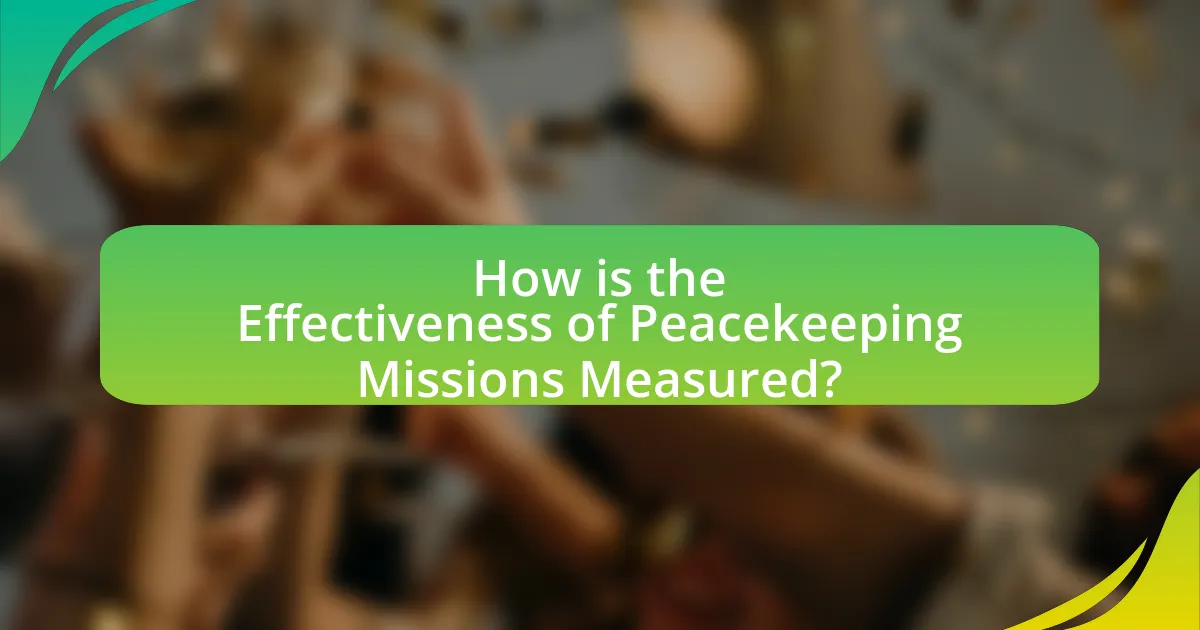
How is the Effectiveness of Peacekeeping Missions Measured?
The effectiveness of peacekeeping missions is measured through various quantitative and qualitative indicators, including the reduction of violence, the establishment of political stability, and the protection of civilians. These indicators are assessed using data such as the number of violent incidents before and after the deployment of peacekeepers, surveys measuring public perception of safety, and evaluations of political agreements facilitated by peacekeeping forces. For instance, the United Nations often utilizes the “UN Peacekeeping Operations: Principles and Guidelines” document, which outlines specific benchmarks for success, including the restoration of law and order and the promotion of human rights. Additionally, studies have shown that missions with clear mandates and robust resources tend to achieve higher effectiveness rates, as evidenced by the successful stabilization efforts in countries like Liberia and Sierra Leone post-conflict.
What metrics are used to evaluate the success of peacekeeping missions?
Metrics used to evaluate the success of peacekeeping missions include the reduction of violence, the establishment of political stability, and the improvement of humanitarian conditions. Specifically, the decrease in armed conflict incidents and civilian casualties serves as a primary indicator of mission effectiveness. Additionally, the successful implementation of peace agreements and the facilitation of democratic processes, such as elections, are critical metrics. The United Nations often assesses these factors through reports and data collection, which provide evidence of progress or setbacks in the mission areas. For instance, the UN’s Department of Peace Operations utilizes a framework that includes qualitative and quantitative data to measure these outcomes, ensuring a comprehensive evaluation of peacekeeping efforts.
How do we assess the impact on local populations?
To assess the impact on local populations, researchers and organizations utilize a combination of quantitative and qualitative methods, including surveys, interviews, and demographic analysis. These methods allow for the collection of data on changes in social, economic, and health indicators before and after the implementation of peacekeeping missions. For instance, a study by the United Nations Department of Peacekeeping Operations found that peacekeeping missions can lead to a 30% reduction in violence in conflict-affected areas, which directly influences local population stability and well-being. Additionally, community feedback mechanisms are often established to gauge local perceptions of peacekeeping effectiveness, ensuring that the voices of affected populations are included in the assessment process.
What role does the duration of missions play in their effectiveness?
The duration of missions significantly impacts their effectiveness, as longer missions often allow for deeper engagement with local communities and more comprehensive conflict resolution strategies. Research indicates that peacekeeping missions lasting over a decade tend to achieve more sustainable peace outcomes compared to shorter missions, which may struggle to establish lasting stability. For instance, the United Nations Multidimensional Integrated Stabilization Mission in Mali (MINUSMA), deployed in 2013, has faced challenges due to its relatively short operational timeline, highlighting the importance of extended presence for effective peacekeeping.
Why do some Peacekeeping Missions succeed while others fail?
Some peacekeeping missions succeed while others fail due to factors such as mandate clarity, local support, and resource availability. Successful missions often have well-defined objectives and robust backing from the host nation, which fosters cooperation and stability. For instance, the United Nations Stabilization Mission in Haiti (MINUSTAH) effectively reduced violence and restored order due to its clear mandate and local engagement. Conversely, missions like the United Nations Operation in Somalia II (UNOSOM II) struggled due to ambiguous goals and lack of local support, leading to operational challenges and eventual withdrawal. Historical data indicates that missions with strong political will and adequate resources are more likely to achieve their objectives, highlighting the importance of these elements in determining the success or failure of peacekeeping efforts.
What factors contribute to the success of specific missions?
The success of specific missions is primarily influenced by clear objectives, adequate resources, and effective coordination among stakeholders. Clear objectives ensure that all participants understand the mission’s goals, which enhances focus and alignment. Adequate resources, including funding, personnel, and equipment, are essential for executing tasks effectively; for instance, the United Nations peacekeeping missions often require substantial logistical support to operate successfully in conflict zones. Effective coordination among various stakeholders, such as local governments, international organizations, and non-governmental organizations, facilitates communication and collaboration, which is critical for addressing complex challenges. Historical examples, such as the successful implementation of the United Nations Stabilization Mission in Haiti (MINUSTAH), demonstrate that these factors significantly contribute to mission effectiveness by fostering stability and rebuilding efforts in post-conflict environments.
How do external influences affect mission outcomes?
External influences significantly affect mission outcomes by shaping the operational environment and impacting the resources available to peacekeeping forces. Factors such as political support from member states, local public opinion, and the presence of non-state actors can either facilitate or hinder mission effectiveness. For instance, a study by the United Nations Department of Peacekeeping Operations indicates that missions with strong backing from the host country’s government tend to achieve better stability outcomes, as seen in the United Nations Stabilization Mission in Haiti, where local cooperation was crucial for success. Conversely, missions facing hostility from local populations or interference from neighboring countries often struggle to fulfill their mandates, as evidenced by the challenges faced by the African Union Mission in Somalia.
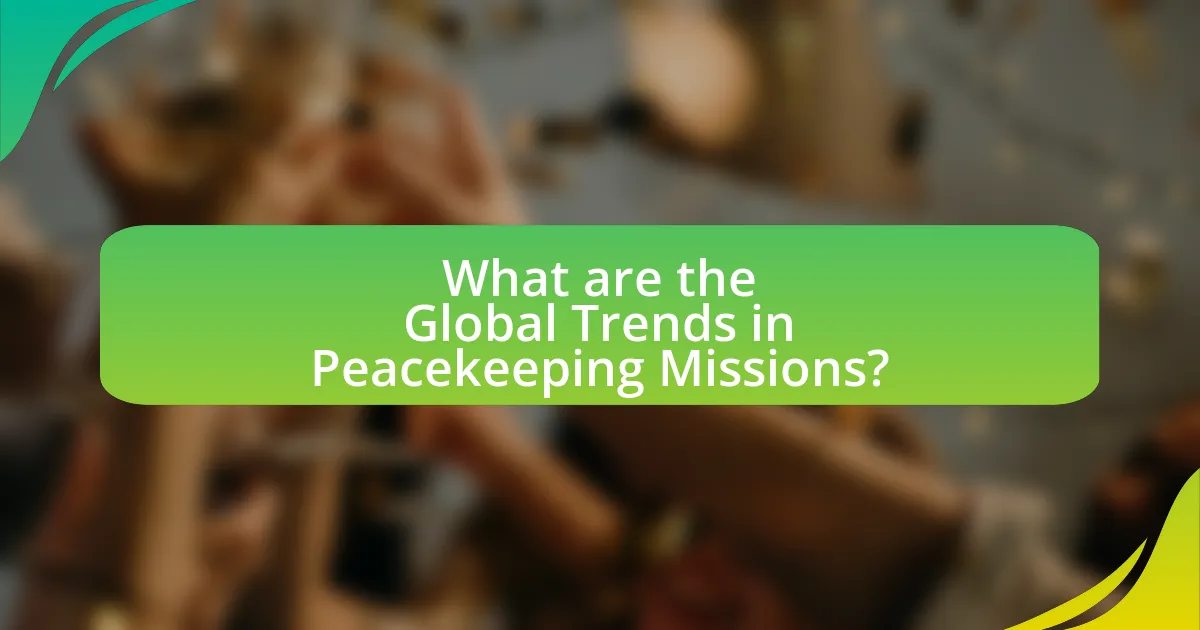
What are the Global Trends in Peacekeeping Missions?
Global trends in peacekeeping missions indicate a shift towards multidimensional operations that integrate political, humanitarian, and developmental objectives. Recent data shows that peacekeeping missions increasingly focus on protecting civilians, with 60% of UN peacekeeping operations now mandated to do so, reflecting a growing recognition of the need for comprehensive security strategies. Additionally, there is a trend towards greater collaboration with regional organizations, as seen in missions like the African Union’s efforts in Somalia, which enhance local ownership and sustainability. Furthermore, the use of technology in peacekeeping, such as drones for surveillance and data collection, is on the rise, improving operational effectiveness and situational awareness. These trends underscore the evolving nature of peacekeeping in response to complex global conflicts.
How have the mandates of peacekeeping missions evolved over time?
The mandates of peacekeeping missions have evolved from traditional military observer roles to multidimensional operations that include civilian protection, humanitarian assistance, and support for political processes. Initially, peacekeeping missions, such as the United Nations Emergency Force in 1956, focused primarily on monitoring ceasefires and maintaining buffer zones. Over time, particularly after the Cold War, the complexity of conflicts increased, leading to missions like the United Nations Mission in Liberia (UNMIL) in 2003, which combined military presence with efforts to rebuild governance and infrastructure. This evolution reflects a broader understanding that sustainable peace requires not only the cessation of hostilities but also addressing underlying political, social, and economic issues.
What are the emerging challenges in modern peacekeeping?
Emerging challenges in modern peacekeeping include the increasing complexity of conflicts, the rise of non-state actors, and the need for robust mandates that address multifaceted crises. Conflicts today often involve a mix of political, ethnic, and economic factors, making it difficult for peacekeepers to navigate and implement effective solutions. Additionally, non-state actors, such as militias and terrorist groups, have gained prominence, complicating traditional peacekeeping efforts that were primarily focused on state-to-state conflicts. Furthermore, peacekeeping missions now require more comprehensive mandates that encompass not only security but also humanitarian assistance, development, and the protection of human rights, as seen in missions like the United Nations Multidimensional Integrated Stabilization Mission in Mali (MINUSMA). These challenges necessitate adaptive strategies and enhanced cooperation among international stakeholders to ensure the effectiveness of peacekeeping missions.
How do international relations shape peacekeeping efforts?
International relations significantly shape peacekeeping efforts by influencing the political will, resource allocation, and operational mandates of peacekeeping missions. For instance, the United Nations Security Council, which reflects the dynamics of international relations, determines the authorization and scope of peacekeeping operations based on the consensus of its member states. Historical examples include the United Nations’ intervention in the Balkans during the 1990s, where geopolitical interests and alliances among major powers dictated the level of support and engagement in peacekeeping missions. Additionally, the effectiveness of peacekeeping is often contingent upon the relationships between contributing nations and the host country, as seen in the African Union’s peacekeeping efforts in Somalia, which are shaped by regional alliances and international partnerships.
What lessons can be learned from past Peacekeeping Missions?
Past peacekeeping missions demonstrate several critical lessons, including the importance of clear mandates, the necessity of robust troop contributions, and the value of local engagement. Clear mandates ensure that peacekeepers understand their objectives, as seen in the United Nations Mission in Sierra Leone (UNAMSIL), which successfully disarmed combatants due to its well-defined goals. Robust troop contributions are vital; for instance, the United Nations Stabilization Mission in Haiti (MINUSTAH) faced challenges due to insufficient personnel, highlighting the need for adequate resources. Lastly, local engagement is crucial for sustainable peace, as evidenced by the success of the African Union Mission in Somalia (AMISOM), which involved local communities in the peace process, leading to more effective outcomes. These lessons underscore the need for strategic planning and collaboration in future peacekeeping efforts.
What successful strategies have been implemented in effective missions?
Successful strategies implemented in effective peacekeeping missions include robust mandate clarity, local engagement, and adaptive resource allocation. Clear mandates, such as those established by the United Nations, provide peacekeepers with specific objectives, enhancing operational effectiveness. Local engagement fosters trust and cooperation between peacekeepers and communities, as seen in missions like MINUSMA in Mali, where community dialogues have improved security outcomes. Adaptive resource allocation allows missions to respond to evolving situations, exemplified by the UN’s rapid deployment capabilities in crises, ensuring timely support and intervention. These strategies collectively contribute to the overall success and sustainability of peacekeeping efforts.
How can failures inform future peacekeeping efforts?
Failures in peacekeeping efforts can inform future missions by highlighting critical areas for improvement, such as operational strategies, resource allocation, and engagement with local communities. For instance, the failure of the United Nations peacekeeping mission in Rwanda during the 1994 genocide underscored the necessity for timely intervention and better intelligence-sharing among international forces. This event led to reforms in the UN’s approach to peacekeeping, emphasizing the importance of rapid response capabilities and the need for robust mandates that empower peacekeepers to act decisively in crises. Additionally, analyzing past failures allows for the identification of patterns and factors that contribute to mission success or failure, enabling future missions to be better equipped to handle complex situations.
What best practices can enhance the effectiveness of Peacekeeping Missions?
Best practices that can enhance the effectiveness of peacekeeping missions include robust training for personnel, clear mandates, and strong local partnerships. Training ensures that peacekeepers are equipped with the necessary skills to handle complex situations, as evidenced by the United Nations’ emphasis on pre-deployment training programs that have shown to improve mission outcomes. Clear mandates provide peacekeepers with specific objectives, which have been linked to higher success rates in conflict resolution, as seen in missions like UNAMID in Darfur. Additionally, fostering strong partnerships with local communities and governments enhances trust and cooperation, which is critical for mission success, demonstrated by the positive impact of community engagement strategies in missions such as MINUSMA in Mali.
How can training and preparation improve mission outcomes?
Training and preparation significantly enhance mission outcomes by equipping personnel with the necessary skills and knowledge to effectively respond to various scenarios. Well-structured training programs improve decision-making, increase operational efficiency, and foster teamwork among mission members. For instance, the United Nations has reported that peacekeeping missions with comprehensive pre-deployment training have a higher success rate in achieving their objectives, as evidenced by the improved performance metrics in missions such as those in Liberia and Sierra Leone. These missions demonstrated that trained personnel were better able to navigate complex environments, manage conflicts, and engage with local communities, ultimately leading to more sustainable peace.
What role does community engagement play in successful peacekeeping?
Community engagement is crucial for successful peacekeeping as it fosters trust and cooperation between peacekeepers and local populations. Engaging communities allows peacekeeping forces to understand the specific needs and concerns of the people they serve, which enhances the effectiveness of their operations. For instance, the United Nations Multidimensional Integrated Stabilization Mission in Mali (MINUSMA) has emphasized community dialogue to address local grievances, leading to improved security outcomes. Studies show that missions that prioritize community involvement report higher levels of local support and cooperation, which are essential for maintaining peace and stability.
